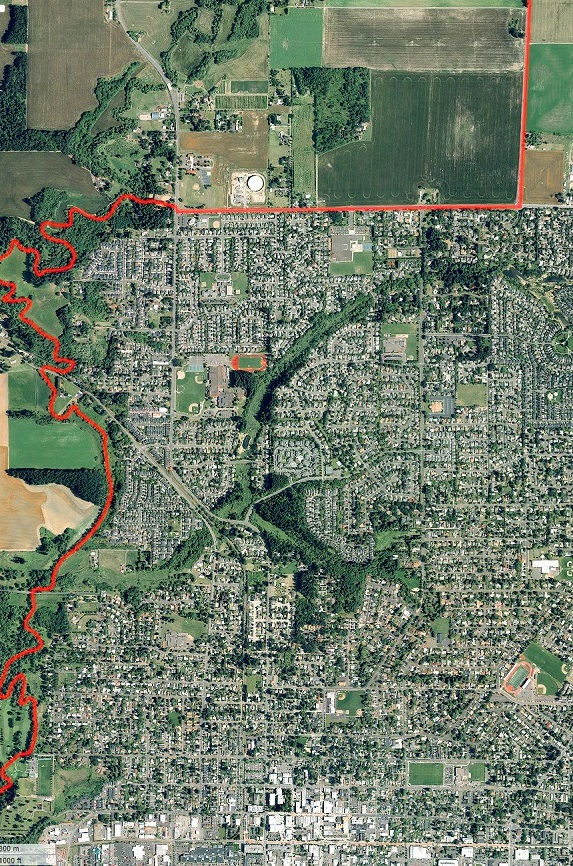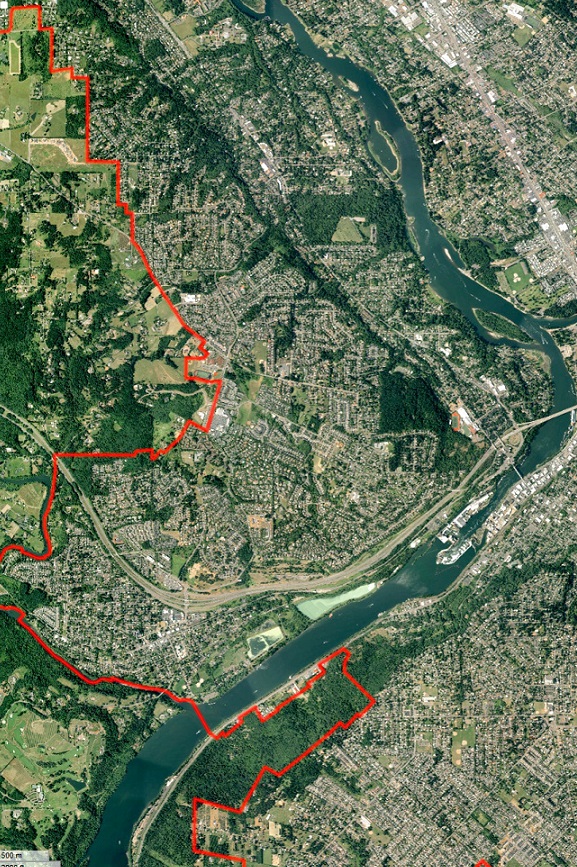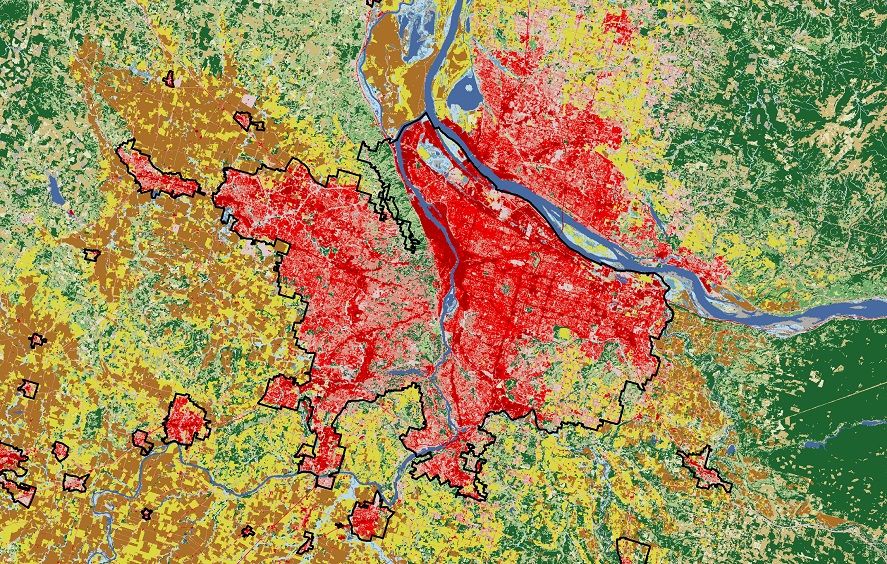Without a doubt, land is one of the most important assets in the American economy. The value of U.S. residential land alone totals $22 trillion—three times the nation’s annual income. Owning land has come to represent the “American Dream.” It opens the door for loans in the capital market, encourages resource stewardship, and provides the foundation for most wealth creation.
But land is also one of the most heavily regulated assets in the economy. Municipal governments actively manage land development by determining which lands can be developed and how. There are open-space requirements, minimum lot size requirements, building codes, and zoning designations for commercial, multi-family, or single-family use. Understanding the impact of these regulations is an economic and environmental problem of the first order.
Simply listing each of the different possible effects of land-use regulations can be a challenge. On the one hand, regulations may increase property values by preventing unwanted or unsightly forms of development. On the other hand, regulations might reduce property values by restricting valuable forms of development. What’s more, regulations might protect the property values of existing landowners but limit the ability of newcomers to enter the property market.
This confusion attracts competing interest groups with conflicting policy agendas. The Sierra Club, for instance, urges policies which stimulate the preservation of open space and agricultural lands, as well as “infill” development on unused and under-used land within city boundaries. The National Association of Home Builders opposes urban growth boundaries—such as the one adopted in Portland, Oregon, in the 1970s—because, according to its official policy resolutions, such regulations “restrict the amount of developable land and contribute to increased housing prices and leapfrog development patterns.”
Many economists have tried to better understand the impact of land-use regulations, but they ultimately confuse the various effects and leave many important questions unresolved. If land-use regulations result in higher land prices, for example, is that good or bad for overall human welfare? Existing studies offer conflicting answers to this very basic question.
 |
 |
In a recent paper published in the journal Econometrica, Andy Haughwout, Wilbert van der Klaauw, and I provide the foundations for a more complete understanding of the economic effects of land-use regulations. By exploiting a national database of municipal regulations, we investigate which types of regulations are harmful and which are beneficial.
To address the confusion, we partition the effects of land-use regulations into three parts: the cost to a landowner of regulations on the use of their own parcel, the benefit or cost to a landowner from restrictions on their neighbor’s parcel, and the effect of regulations on the supply of land that is available for development.
Let’s address these different effects in more detail.
One effect of land-use regulation is to decrease land values by restricting how a landowner develops their own land. We call this the own-lot effect. For example, minimum lot size requirements may lead to lots that are “too large,” permit requirements may cause delays that increase financing or design costs, and building codes may increase construction costs. Each of these constraints impacts land values by affecting how landowners use their property.
The external benefits of land-use regulations do not outweigh the costs of regulations.
The external effect of land-use regulations describes how restrictions on nearby lands create costs or benefits for other landowners. If neighboring parcels are subject to restrictions on the density of development or minimum setback requirements, these restrictions also affect the value of other parcels in the area. Open-space requirements, for instance, may increase the value of the landscape for nearby property owners. Alternatively, if the difficulty of obtaining a building permit discourages neighboring property owners from improving blighted properties, or if zoning requirements compel them to build unattractive structures, then the external effect can be negative. Importantly, these external effects can cross municipal borders. Living across the street from a blighted building is just as harmful when the building is in your municipality as when it is not.
Another possibility is that land-use regulations restrict the supply of land that is available for development. This is what we call the supply effect. Urban growth boundaries, for example, are explicitly intended to prevent development. Many people are concerned that land-use regulations affect land and housing prices by limiting the supply of residential or commercial land. It is natural to suspect that such supply restrictions increase the wealth of owners at the expense of first-time buyers.
Separating out these different effects is critical to understanding how land-use regulations impact human welfare. Indeed, much of the current debate over land-use regulations is the result of confusion over these various effects. By measuring them separately, we can better assess the overall effect of such regulations on land values.
How do we accomplish this? In short, we look closely at municipal borders where regulations differ. This allows us to separate the three different effects of land-use regulations. By examining parcels on opposite sides of a municipal border, we compare parcels that experience the same external effect of regulation but different own-lot effects. In other words, the parcels are subject to different regulatory restrictions on the use of their own land, but their proximity to one another means that they are exposed to the same external effect.
Alternatively, if we compare a parcel near the municipal boundary with a parcel far from the boundary then we compare parcels subject to the same own-lot effect but different external effects. In other words, the parcel near the boundary is exposed to the external effect of the regulations in both its own municipality and its neighboring municipality, while the interior parcel is only exposed to the external effect imposed by regulations in its own municipality.
We ultimately want to determine the overall impact of these three effects of land-use regulations—the own-lot, external, and supply effects. To do so, we construct a dataset describing 300,000 sales of large undeveloped plots, along with survey data describing residential land-use regulations in about 2,500 U.S. municipalities. After organizing the data around a map, we compare land price changes and changes in regulation across municipal borders.
What do we find? First, a caveat. Our analysis indicates that the supply effect—the increase in land prices due to restrictions in the supply of developable land—is irrelevant to our calculations of the overall effect of land-use regulations on welfare. Property buyers are made worse off by the same amount that sellers gain—perfectly offsetting each other in terms of overall welfare. This means that when it comes to evaluating the total welfare effects of land-use regulations, we are concerned only with the own-lot and external effects of regulations.
With this in mind, our results are striking. There is a clear decrease in land values as we cross into more heavily regulated municipalities. There is also a steep decline in the share of land developed in more regulated municipalities. In short, the own-lot effect of land-use regulations is clearly negative and sufficiently large to warrant concern.
More surprising, we find that prices drop slightly as we move further into the interior of more regulated municipalities. That is, land-use regulations seem to be having a negative external effect. This suggests that the regulatory burden may be high enough that it reduces people’s willingness to maintain or improve their properties. In this case, as we travel into more regulated municipalities, we are likely to be traveling into neighborhoods that are less well maintained.
The potential upside of land-use regulations—and the reason they are so pervasive—is that regulations might reduce the irritations that your unregulated neighbors cause you. Our data, however, suggest that the external benefits of land-use regulations do not outweigh the costs of regulations, particularly if we account for the decrease in the total amount of land developed. That is, at the margin, land-use regulations are even more irritating than your neighbors would be if they were given a little more freedom.
The implications of our research are straightforward. The benefits from a modest reduction in land-use regulations are likely to be greater than the benefits landowners receive from regulating their neighbors.
Read more: “Land Use Regulation and Welfare,” by Matthew A. Turner, Andrew Haughwout, and Wilbert van der Klaauw. Econometrica, Vol. 82, No. 4 (July 2014).




